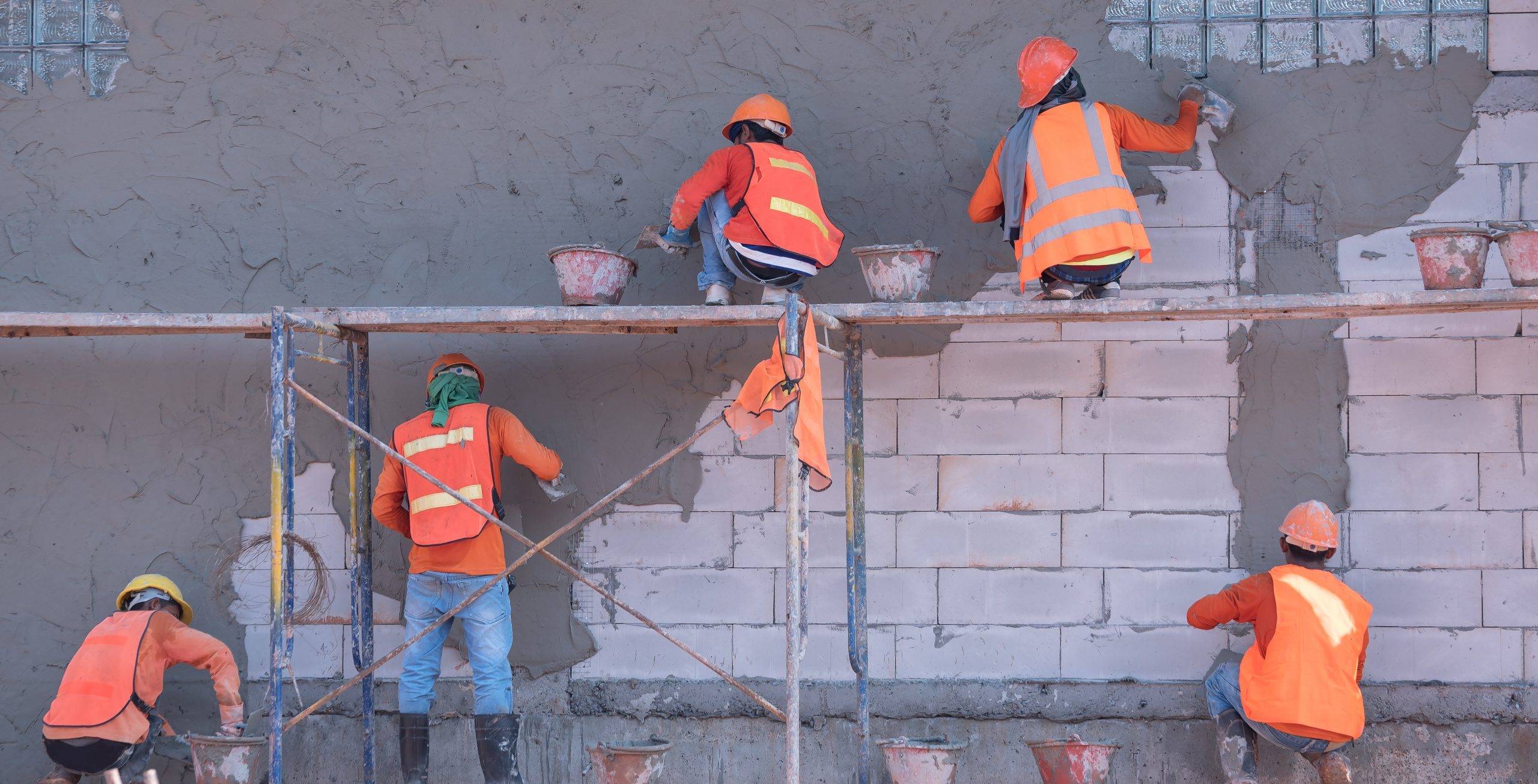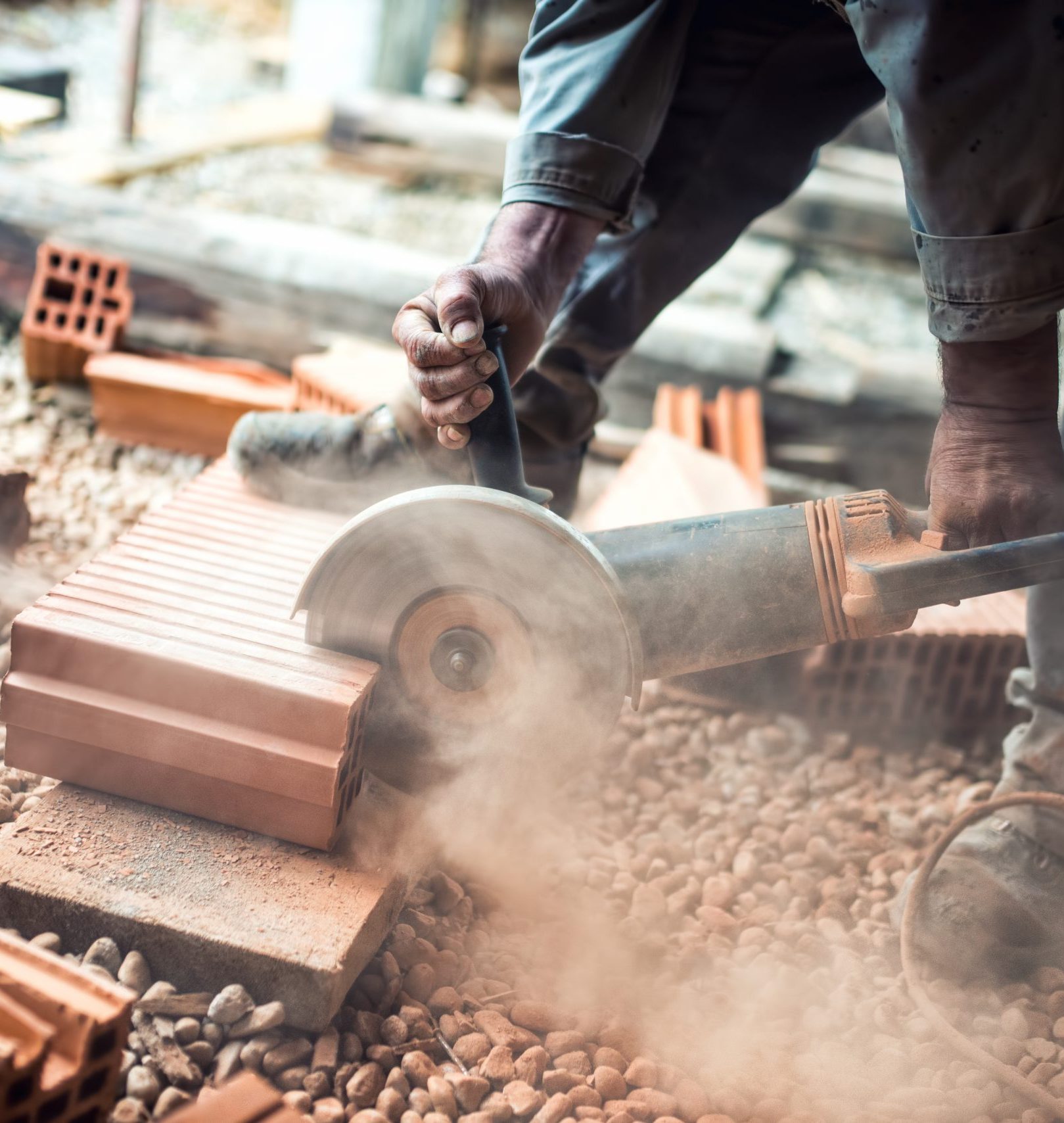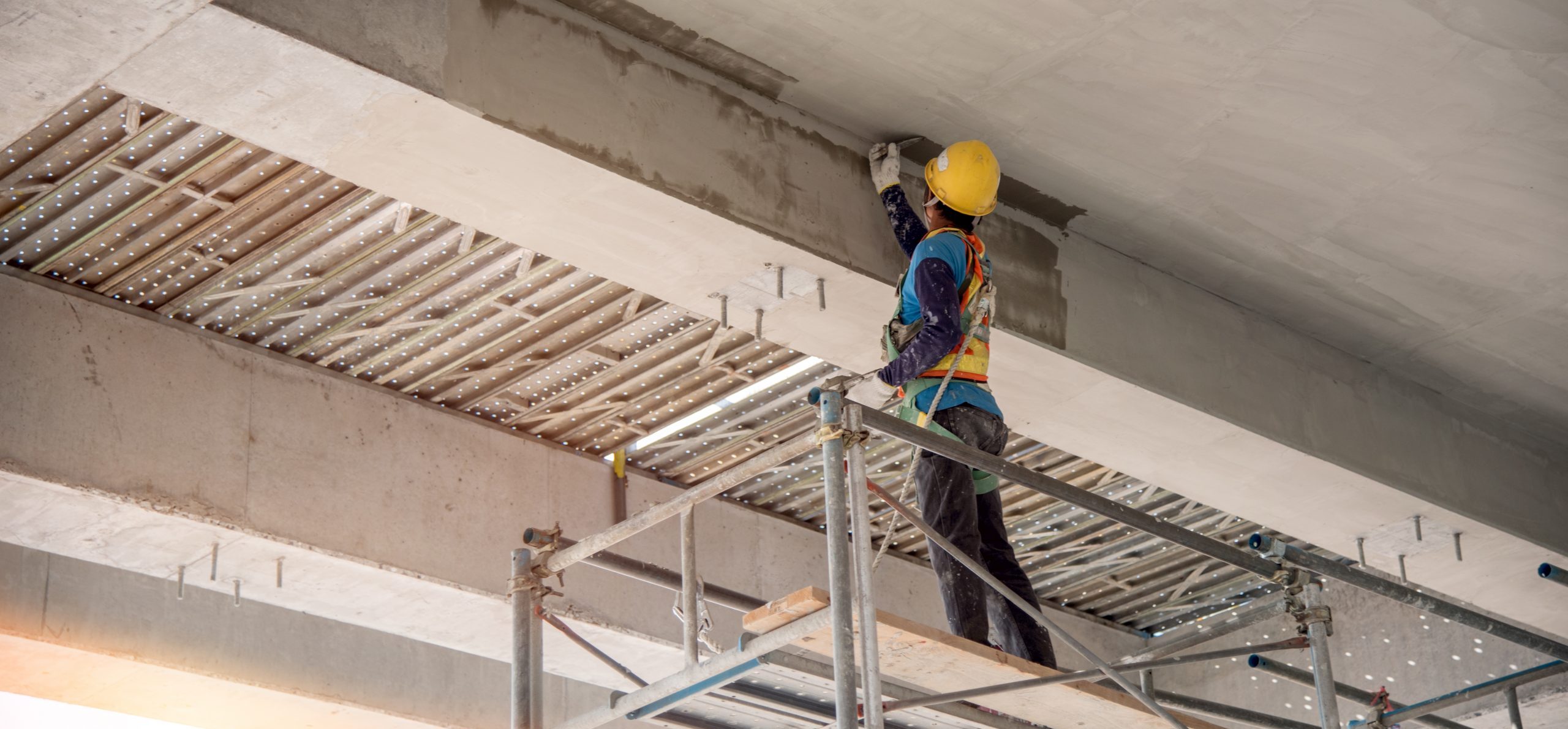Masonry Workers and Mesothelioma
Nearly 300,000 people today make their living as masonry workers who help build, remodel, rehabilitate, or tear down structures and infrastructure, says the U.S. Bureau of Labor Statistics. Many hundreds of thousands more worked as members of this trade in the last century. In fact, masonry workers were key players in construction projects dating back thousands of years.
There was a time—mainly between the 1920s and 1980s—when the materials used by masonry workers were enhanced with the mineral asbestos. Asbestos was routinely added during manufacture to improve the performance of those materials during and after installation. For example, asbestos-supplemented bricks used in making a fireplace prevented them from crumbling or becoming deformed after long exposure to flames and extreme heat.
But there was a problem with asbestos. It was dangerous to human health.
Specifically, asbestos was capable of breaking away from that to which it had been added. When it broke free, asbestos did so in the form of microfine particles.
However, these particles did not fall to the ground after separating from the material containing them. They were so small and lightweight that they almost always rose into the air and floated there for hours or even days before eventually settling to the ground.
The danger for masonry workers was that, during the time those particles were in the air, it was possible to breathe them or swallow them.
Once inside a worker’s body, the asbestos particles would stay there. A decade or two or more later, the worker would discover he or she had developed mesothelioma. Or, possibly, asbestos lung cancer. Or, maybe, asbestosis. These are conditions that science has repeatedly connected to the presence of asbestos particles inside the body.
Not every masonry worker exposed to asbestos develops those diseases. But, certainly, the vast majority of them employed during the middle of the 20th Century would have been unable to escape exposure to asbestos.
Masonry workers employed in the trade after that era and including today use materials made without asbestos, so it’s highly unlikely they will suffer exposure in the course of putting up new structures and architectural features.
However, there does exist the possibility of exposure today in the course of working on remodels, retrofits, refurbishments, and demolitions of anything built before the 1990s. The older a property is, the more likely it was constructed using asbestos-containing materials—materials with which today’s masonry workers still can come into contact

Who qualifies as a masonry worker?
A masonry worker is anyone who is or was engaged in building walkways, walls, chimneys, facades, and other structures from bricks, concrete and concrete blocks, or natural and artificial stones, according to the U.S. Bureau of Labor Statistics.
The U.S. Department of Labor divides masonry workers into four specialty areas.
Brick masons.
Also known as bricklayers, brick masons (and their closely related colleagues block masons) build and repair walls, fireplaces, and other structures with brick, terra cotta, precast masonry panels, concrete block, and other masonry materials, according to the Labor Department. Subspecialties of brick masons are workers who point, clean, and caulk brickwork in need of repair. Another subspecialty is refractory masons—they build firewalls and extreme-heat barriers in factories and other facilities that operate industrial-grade boilers and furnaces.
Cement masons.
These are brick masons who pour, spread, and finish concrete. Other work performed by cement masons includes colorizing concrete surfaces, exposing small stones in walls and sidewalks, or making concrete beams, columns, and panels. Cement masons build walkways and foundations.
Stonemasons.
Building stone walls and placing stone exteriors and floors are the types of jobs handled by these specialized brick masons. They use marble, granite, limestone, and other natural-cut stones. They also use artificial stones, which can be made from concrete, marble chips, or other materials.
Terrazzo masons.
Their job is to pour and finish walkways, floors, patios, and panels that are highly ornamental. Terrazzo masons make heavy use of grinders.
Tasks typically performed by masonry workers include:
- Breaking or cutting materials to required size
- Mixing mortar or grout
- Cleaning and polishing masonry surfaces with hand tools or power tools
- Filling expansion joints with caulking materials
Masonry workers and asbestos exposure
Asbestos was added to bricks. Asbestos was added to mortar, cement, and grout. Asbestos was added to many of the materials used by masonry workers.
Asbestos was also added to many of the materials used by other trades on the same projects as masonry workers.
Adding asbestos to bricks made them lighter, stronger, last longer, look better, and able to block heat or cold (asbestos also made bricks capable of withstanding flames—this was especially important for those used in chimneys, boilers, and furnaces). Asbestos added to mortar and cement, asbestos made them easier to lay and, after curing, deliver all-around superior performance.
Asbestos posed little danger to masonry workers as long as particles of the mineral stayed inside the material to which the asbestos had been added.
It was when those particles emerged from the material that the danger began.
Asbestos particles could separate from whatever material they were within if the material were to be disturbed in some way. For example, bricks oftentimes needed to be cut to size to fit a particular dimensional specification. The act of cutting a brick containing asbestos represented a disturbance of that material. As the blade of the cutting tool sliced through the brick, countless tiny particles of disturbed asbestos would spew forth.
The same could occur were an asbestos brick drilled, scraped, polished, or tapped (such as with the back end of a trowel handle).
Having been expelled from the brick or other material, asbestos particles then would enter the air—the same air breathed by the masonry worker who caused the asbestos to be disturbed.
Freed asbestos particles behave like dust. That is, they float in the air. And they can continue to float for days on end. That means the danger they represent doesn’t dissipate soon after the particles enter the air. Instead, the danger lingers, which increases the chances that not only will a masonry worker inhale them but may likely do so repeatedly over the span of multiple days.
However, in order for mesothelioma, asbestos lung cancer, asbestosis, or other asbestos-related disease to develop, a masonry worker need not necessarily be repeatedly exposed to asbestos. In some cases, all it takes to trigger those diseases is a single encounter with asbestos, and a small amount of particles at that.
Masonry workers and asbestos exposure from building materials

Not until the 1970s did manufacturers begin seriously listening to those voices and start curtailing the practice of adding asbestos to products. Many of the products made in those days were intended for use in the construction trades. They were not specifically meant for use by masonry workers, but sometimes such products were in fact employed by brick masons and stonemasons.
Masonry workers also sometimes came into contact with asbestos-containing construction materials used by other trades for their own specialized activities.
These non-masonry building materials included:
- Drywall
- Insulation
- Ceiling and floor tiles
- Roofing systems
- Electrical systems
- Water and sewage pipes
Asbestos was added to these building materials to make them less susceptible to damage—damage during installation and damage after the job had been completed and the structure occupied.
A benefit that manufacturers found to adding asbestos was it also reduced the weight of the product. That made materials like drywall easier to carry and install. Lighter-weight materials were also less expensive to ship from factory to distributor and from seller to buyer, which meant those in the chain of commerce could expect to earn a better profit on each unit out the door.
Another benefit of asbestos was it made installed construction materials more noise absorbent and less conductive of heat and cold. And, of course, asbestos inside any product greatly boosted its chances of surviving an accidental fire.
But building materials straight from the seller seldom could be used without first modifying them to fit the space where they would be installed. Modifying typically required the material be sawed, drilled, bent, hammered, or sanded. Any one of these actions would be enough to permit asbestos particles to break free and enter the air, where it would be possible for those particles to be breathed or perhaps swallowed by anyone in proximity—masonry workers included.
Inhaled, asbestos particles would journey along the lungs’ airways and ultimately embed adjacent to healthy cells. Swallowed, those asbestos particles would do the same thing, but within the abdomen.
Through processes not yet fully understood, the asbestos particles would trigger harmful changes in the neighboring healthy cells. It might take one or more decades to accomplish, but eventually those changes could result in mesothelioma, asbestos lung cancer, asbestosis, or another asbestos-related condition.

Masonry workers and asbestos exposure from power tools
The powered hammers, diamond-bladed saws, grinders, and specialized drills they use get the job done in short order, but also raise clouds of dust in the process. In the past, when asbestos was present in bricks and stones, those dust clouds were usually rife with danger for masonry workers.
Not only that, but the tools themselves could be sources of airborne asbestos. For example, with tools made before the 1980s, asbestos was oftentimes packed inside motor housings so that the high heat generated by the motor would do no damage to other components and would not burn the operator.
For the most part, the asbestos inside the tools stayed there and did not leach into the air breathed by masonry workers unless the motor housings were opened for inspection or to permit repairs.
By whatever means a power tool put asbestos into the air, it would be hours or days before the asbestos particles drifted to the ground. Of course, particles precipitated out of the air could just as easily again become airborne—all it would take is a draft caused by opening a door or window, or even just someone stirring them by walking through the area of settled particles.
The risk to masonry workers was that asbestos in the air would be inhaled or swallowed. The particles would then become trapped in the lungs or intestines and possibly set the stage for the onset of mesothelioma, asbestos lung cancer, asbestosis, or other asbestos-triggering disease.
Masonry workers’ rights to compensation after asbestos exposure
The companies that manufactured products containing asbestos have been time and again held liable for the health harms and related damages caused by those wares. They have been ordered by courts to pay asbestos-injured masonry workers substantial sums to cover the costs of treatment as well as to make up for income lost as a consequence of becoming disabled by the disease.
To seek compensation, you must first file a lawsuit against the company or companies responsible for causing the asbestos exposure. The defendant company or companies can either fight the lawsuit all the way through to the delivery of a verdict or—as most often happens—they can settle out of court and end the matter without need of trial.
Some companies you might wish to sue can’t be taken to court at all because they have filed for bankruptcy protection. However, they can still be made to pay compensation to you. In exchange for immunity from lawsuits, these companies have agreed to set up special trust funds to ensure that those who were provably injured by their asbestos products can receive a financial remedy.

About the author…
Gregory Sandifer graduated from Southern Illinois University Edwardsville and received his law degree from Western State University College of Law in Fullerton, California.